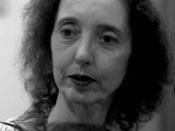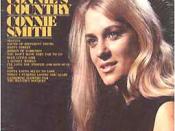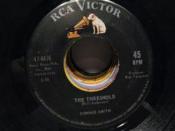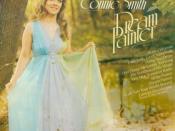Womanhood Initiation "Where are You Going, Where Have You Been", a short story written by Joyce Carol Oates, is a story of a young girl's initiation to adulthood. Whether "Connie exists in a dreamlike state but never in a dream"(507) as A. R. Coulthard states or "dreams Arnold Friend"(55) as suggested by David Gratz is unimportant to the theme: Connie's coming of age and change from the innocence of youth to the bitter reality of true life. Connie is the story's only truly dynamic character and therefore of the most interest to the reader. The change she undergoes making her a dynamic character also makes the story an initiation story.
An initiation story is one in which a person learns a life changing lesson or truth. In "Where Are You Going, Where Have You Been", Connie learns about life. She learns that the world in her fifteen year old mind doesn't exist; the world of boys and music is imaginary and there is true danger.
The lesson Connie learns comes out of an experience with Arnold Friend who maybe a figment of her imagination. Whether he is real or imagined is not important, Connie changes because of this experience.
Connie is introduced as the typical fifteen year old girl; she's interested in boys and does not want to be with her parents most of the time. She is going through the stage where her mom still wants her to be a little girl and she is ready to be an adult; only without the responsibilities. Connie seems to have little knowledge of how the world really works or the severity of its dangers. Her innocence of danger is shown when Oates writes, "but sometimes they went across the highway, ducking fast across the busy road, to a drive-in restaurant where older kids hung out"(Oates 28). She wanted to feel older so she went where older teenagers were, uncaring of the hazards present in the traffic and unknowing of the possible situations hanging out with older kids can present to a young girl. Her age and lack of experience lead to troubles with Arnold Friend, imagined or real, and also to her change and initiation to adulthood.
Connie's attitude is very normal in our society. Teenagers think they are grown up before they understand the repercussions of adult actions. She is at an age of ignorance, at time where she thinks she knows it all but doesn't really understand. The music that constantly runs through Connie's head is evidence of the fact that nothing real is on her mind. Just the typical fifteen year old thoughts of boys and getting away from home. Connie has two sides, "one for home and one for anywhere that was not home"(Oates 28). She does not think anyone at home understands her needs or what is going through her head. Connie's character represents the change to adulthood common in our society.
Even though Connie believes her problem is unique and no one understands, she is aware her mom underwent a similar change. Oates writes, " Her mother had been pretty once too, if you could believe those old snapshots in the album, but now her looks were gone and that was why she was always after Connie"(27). This similarity is what causes the clash between Connie and her mother and most daughters and mothers in our society. Connie's mother had been through the Connie's coming of age. From this past experience, she understands Connie and wants to help her through it. However, some things are best learned by experience. Connie has to come to terms with it alone and no one can help her. Connie's experience brings her over the threshold and into adulthood.
This coming of age Connie experiences in the story is what causes her to change. She initially is a girl who wants to be older but cannot grasp that you have to do more then act older; you must think it. Her first confrontation with Arnold Friend gives her a valuable insight to the future. He is "a boy who frightened her the night before"(Gratz 55). When Connie sees Arnold Friend the first time she is startled by him. This unsettling leads her wondering mind off its beaten path. At the first moment she sees him, something inside her changes causing her perfect world of boys and music to change. She soon forgets Arnold Friend but her complete initiation is soon to follow.
When Arnold shows up at her house, Connie reacts cautiously. When he asks her to come for a ride with him, she says no. There is something about Arnold that makes Connie think about her actions. When she had been out with her friends and they had met boys the night before Connie threw caution to the wind. Now she wonders about something which makes her turn Arnold down. This is the beginning of Connie's change. She is starting to think about what is right and wrong, safe and unsafe. At this point Connie still believes that she can hide behind her innocence; she does not realize that there is no shelter from reality.
When Oates write "'Maybe you two better go away,' Connie said faintly"(33), the reader begins to see her shield fade away. The old Connie would not have said this faintly. She is starting to realize she's not in control of her world. The two boys have come to do something bad to her and she can't make them go away. The confidence Connie has at the beginning of the story is very strong. She goes out with her friends alone with no worries of danger or trouble. Now she sees danger and her confidence begins to shrink. The danger with Arnold Friend is reality; a reality Connie is beginning understand. However Connie holds onto hope that she can hide from it inside her house.
Connie stays in her house, in her safe hold. She still feels some security inside. Her mind still has not processed that there is no escape. Arnold makes this point clear to her when he begins saying that he will hurt her family when they get back if she doesn't come with him. He also says that he will stay outside as long as Connie doesn't touch the phone. Connie is presented with a choice, stay in the house until her family returns which will mean their death or go outside with Arnold. It is uncertain which choice Connie will make for a while as she wavers between the selfish way she used to think and how she has recently begun thinking. Oates writes, "she cried for her mother"(36) when Connie ran for a phone. Somewhere inside her mind she still thinks someone can save her.
Connie's complete initiation is shown when she walks through the door to Arnold. She has come to terms with reality and recognizes her fate. Oates shows a change in thought when she writes, "She thought for the first time in her life that it was nothing that was hers"(37). Her former state of mind full of boys is gone, the music has stopped, and Connie faces reality. She is alone, no family or house to protect her. Connie has learned the severity of actions and the truth of the world. There is danger and nothing can shield you from it. The vain girl Oates presents the reader with in the beginning of the story is gone. She understands the world does not revolve around her.
The story closes with this revelation. The reader is left to ponder the outcome of Connie. Whether or not the story is a dream is open for interpretation. What really matter is that Connie has changed. She has learned that there is danger in the world and that it is necessary to avoid it. Her perfect world that she created in her mind was shattered and she became an adult in thought. Connie became a woman on that hot summer day while her family was at a picnic. Her mom was never to return home to the girl she left at home. Connie developed a sense of the real world; a world outside the music in her head.





